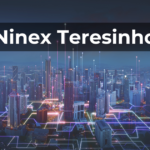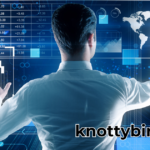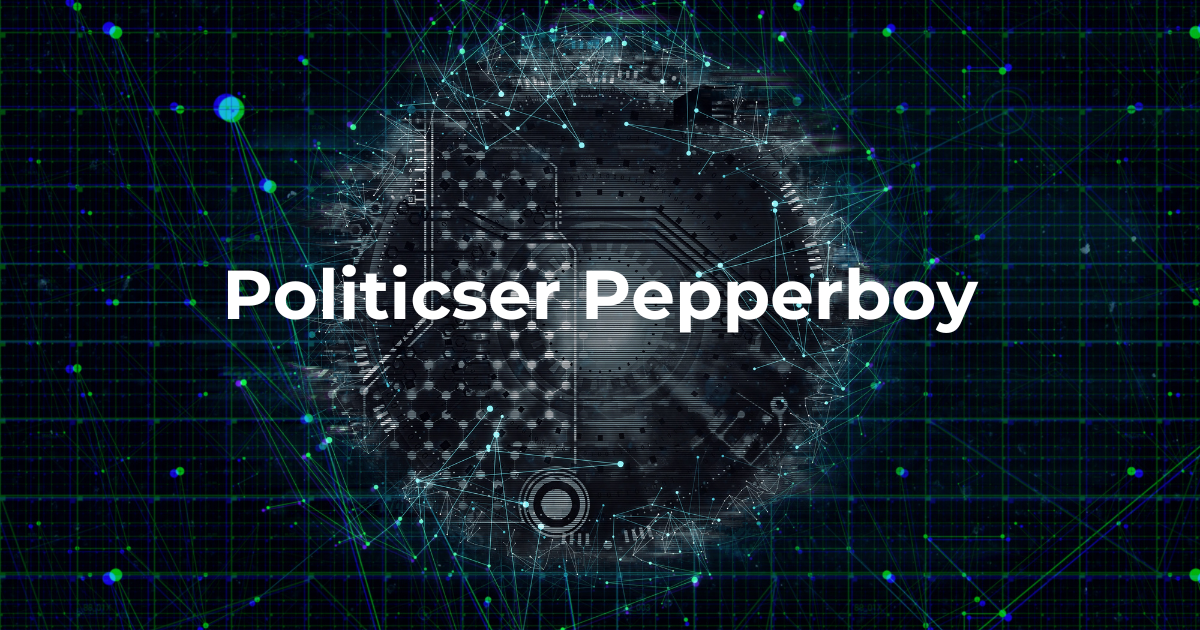Animation has come a long way since its inception, evolving into a multifaceted art form that captivates audiences across the globe. Among the various styles and techniques, drageanimations have emerged as a compelling medium for storytelling. This unique form of animation combines creativity, technical skill, and an understanding of visual narrative to create dynamic visual experiences. As viewers increasingly seek immersive and engaging content, the significance of drageanimations continues to grow.
Drageanimations are characterized by their fluid motion, intricate designs, and the ability to convey emotions through visual storytelling. These animations often blend traditional art techniques with modern technology, resulting in captivating narratives that resonate with diverse audiences. This article delves deep into the world of drageanimations, exploring their definition, the process of creation, the tools used, the storytelling aspect, the challenges faced by animators, and the future of this exciting art form. Whether you’re an aspiring animator, a seasoned professional, or simply an animation enthusiast, this comprehensive exploration of drageanimations will enhance your understanding of this dynamic medium.
Understanding Drageanimations
What Are Drageanimations?
Drageanimations represent a distinct category within the broader realm of animation, marked by their unique artistic approach and storytelling capabilities. Unlike traditional animations that may rely heavily on predefined character movements and scripted dialogue, drageanimations emphasize fluidity and spontaneity. This style draws inspiration from various art forms, incorporating elements from illustrations, graphic design, and even live-action footage. The result is an animation that feels alive and dynamic, engaging the audience in a manner that transcends conventional storytelling.
The essence of drageanimations lies in their ability to evoke emotions through visual artistry. Animators create a world where characters can express complex feelings and thoughts through movement, color, and design. This expressive potential makes drageanimations particularly effective for storytelling, allowing creators to convey themes and messages that resonate deeply with viewers. By focusing on the artistry of movement and design, drageanimations have carved out a niche for themselves in the animation landscape, appealing to audiences looking for innovative and visually stunning experiences.
Comparison with Traditional Animation Styles
When comparing drageanimations to traditional animation styles, several key differences emerge. Traditional animation often relies on a structured approach, where characters and scenes are meticulously planned and executed frame by frame. While this method can result in stunning visuals, it may also limit the fluidity and spontaneity that define drageanimations. In contrast, drageanimations prioritize a more organic approach, allowing for greater flexibility in character movements and storytelling.
Another distinguishing factor is the integration of technology in drageanimations. While traditional animation techniques, such as hand-drawn animations, remain popular, the rise of digital tools has transformed how animations are created. Drageanimations often leverage advanced software and hardware, enabling animators to experiment with styles, techniques, and effects that were previously unattainable. This blend of technology and artistry results in a unique animation experience that captivates audiences in ways traditional methods may not achieve.
The relationship between drageanimations and traditional animation styles is not adversarial but rather complementary. Many animators draw inspiration from traditional techniques while incorporating the innovative elements of drageanimations. This fusion leads to an evolving animation landscape that continues to push the boundaries of creativity and storytelling.
Also Read: AI Art Horror IV Needles
The Process of Creating Drageanimations
Step 1: Concept Development
The journey of creating drageanimations begins with concept development. This stage is crucial as it lays the foundation for the entire project. During this phase, animators brainstorm ideas, themes, and narratives that they wish to convey through their animations. Effective concept development involves considering the target audience and the emotional impact the animation aims to achieve. Whether it’s a whimsical tale for children or a thought-provoking narrative for adults, the concept must resonate with viewers.
Storyboarding is an essential aspect of concept development. This process involves sketching key scenes and sequences to visualize the animation’s flow. Storyboards serve as a blueprint for the entire project, helping animators determine the pacing, composition, and transitions between scenes. A well-structured storyboard can save time and resources during production, ensuring that the final product aligns with the original vision. Furthermore, it provides an opportunity for collaboration and feedback, allowing animators to refine their ideas before diving into the production phase.
As the concept evolves, it is essential for animators to remain flexible and open to change. Often, initial ideas may need to be adjusted or refined based on creative insights or audience feedback. This iterative process of concept development fosters innovation and creativity, resulting in drageanimations that are not only visually stunning but also narratively compelling.
Step 2: Design and Character Development
Once the concept is firmly established, the next step in the creation of drageanimations is design and character development. This phase is where the artistic vision begins to take shape, as animators create unique characters and environments that embody the narrative. Character design plays a pivotal role in engaging the audience; well-designed characters can evoke empathy and connection, making viewers invested in their journeys.
In drageanimations, the design process often combines various artistic styles, allowing animators to explore different visual aesthetics. This experimentation can lead to distinctive character traits and personality traits that set them apart from traditional animated characters. For example, characters in drageanimations may have exaggerated features or dynamic colors that enhance their expressive capabilities. The environment also plays a crucial role in character development, as it provides context and depth to the narrative. Whether it’s a fantastical world or a realistic setting, the design choices should reflect the story’s tone and themes.
To facilitate this creative process, animators typically utilize a range of digital tools and software. Programs like Adobe Illustrator, Procreate, and Blender are popular choices for character design, allowing artists to create intricate designs and illustrations. The ability to manipulate digital assets provides animators with the flexibility to make adjustments and enhancements throughout the design phase. This integration of technology empowers animators to push their creative boundaries and develop visually captivating characters and environments.
Step 3: Animation Techniques
The heart of drageanimations lies in the animation techniques employed to bring characters and scenes to life. Various methods can be utilized, and the choice of technique often depends on the desired visual style and narrative requirements. One common approach is traditional frame-by-frame animation, where each frame is meticulously crafted to create a seamless flow of motion. While this method can be labor-intensive, it allows for precise control over character movements, making it ideal for expressive and nuanced animations.
In addition to traditional techniques, drageanimations frequently incorporate 2D and 3D animation styles. 2D animation is characterized by its flat designs and can evoke a sense of nostalgia while providing a modern aesthetic. On the other hand, 3D animation brings depth and realism to characters and environments, allowing for more dynamic camera angles and perspectives. The integration of both styles can result in visually stunning animations that capture the essence of the story.
Another exciting aspect of drageanimations is the use of motion graphics and visual effects. These elements can enhance the storytelling by adding layers of complexity and interactivity. Animators can create visually striking transitions, particle effects, and environmental changes that enrich the viewer’s experience. The combination of various animation techniques and effects not only showcases the animator’s skill but also serves to immerse the audience in the narrative world.
Tools and Software for Drageanimations
Popular Animation Software
In the world of drageanimations, the right software can significantly impact the quality and efficiency of the production process. Numerous animation programs cater to different styles and techniques, making it essential for animators to choose tools that align with their artistic vision. Among the most popular software options is Adobe Animate, known for its versatility and user-friendly interface. It enables animators to create both 2D and 3D animations, making it a valuable tool for those working in drageanimations.
Another noteworthy program is Blender, a powerful open-source software that has gained popularity among animators for its robust features and capabilities. Blender offers a comprehensive suite of tools for modeling, rigging, and animating characters in 3D. Its flexibility and support for various rendering engines make it a top choice for animators looking to create visually stunning drageanimations. Additionally, Blender’s community-driven development ensures that users have access to regular updates and improvements.
For those focused on character design, Procreate has become a favorite among animators and illustrators. This digital painting app allows for intuitive drawing and illustration, making it easy to sketch character designs and concept art. With its array of brushes and tools, Procreate facilitates the creative process and enhances the overall design quality in drageanimations. By leveraging the strengths of these software options, animators can elevate their projects and achieve their artistic goals.
Hardware Considerations
In addition to software, the hardware used in animation production plays a critical role in the overall workflow and output quality. A reliable computer with sufficient processing power and graphics capabilities is essential for animators working with demanding software like Blender or Adobe Animate. Investing in a high-performance machine can significantly reduce rendering times and improve overall productivity, allowing animators to focus on the creative aspects of their work.
Graphics tablets have also become a staple for many animators, providing a more natural drawing experience than a traditional mouse. Tablets such as the Wacom Cintiq or Huion offer pressure sensitivity and precision, enabling artists to create intricate designs and animations with ease. These devices bridge the gap between traditional drawing techniques and digital animation, allowing animators to express their creativity more effectively.
Furthermore, considering accessories like dual monitors can enhance productivity by providing additional screen space for animators to work on multiple aspects of their projects simultaneously. This setup allows for smoother multitasking, as animators can reference storyboards, designs, and software tools without switching between windows. By carefully selecting hardware that complements their workflow, animators can optimize their creative process and produce high-quality drageanimations.
The Role of Storytelling in Drageanimations
Crafting Compelling Narratives
At the core of drageanimations lies the art of storytelling. Unlike traditional forms of animation that may rely heavily on dialogue, drageanimations thrive on visual narratives that engage viewers on multiple levels. Crafting a compelling narrative requires a deep understanding of character development, conflict, and resolution. Animators must consider how the story unfolds visually, using movement, color, and design to enhance the emotional impact.
One of the key techniques in crafting effective narratives is the use of visual metaphors. By employing symbols and imagery that resonate with the audience, animators can convey complex themes and emotions without relying on words. For example, a character’s journey may be represented through a changing environment, where the surroundings shift in response to their emotional state. This visual storytelling technique adds depth to the narrative, inviting viewers to interpret the story in their unique ways.
Additionally, pacing plays a crucial role in storytelling within drageanimations. The rhythm of the animation can influence how the audience experiences the narrative. For instance, quick cuts and fast-paced movements can create a sense of urgency, while slower transitions allow viewers to absorb the emotional weight of a scene. By carefully controlling the pacing and flow of the animation, creators can guide the audience’s emotional response, enhancing the overall storytelling experience.
Emotional Impact through Visuals
The emotional impact of drageanimations is one of the defining features that set them apart from other animation styles. Animators leverage various visual elements to evoke specific feelings and create connections with the audience. Color theory, for instance, plays a vital role in conveying emotions. Bright, vibrant colors can elicit feelings of joy and excitement, while darker tones may evoke sadness or tension. By carefully selecting color palettes that align with the narrative, animators can enhance the emotional resonance of their work.
Moreover, movement and character expressions contribute significantly to the emotional depth of drageanimations. Characters may convey complex emotions through subtle movements, such as a slight tilt of the head or a shift in posture. Animators often focus on capturing these nuances, allowing characters to express vulnerability, strength, or determination. This attention to detail fosters a sense of empathy in the audience, drawing them into the characters’ experiences.
Case studies of successful drageanimations reveal the power of visual storytelling in evoking emotions. For instance, animations like “The Girl Who Leapt Through Time” masterfully combine breathtaking visuals with heartfelt narratives, captivating audiences worldwide. The seamless integration of visual elements and storytelling techniques results in a profound emotional impact that lingers long after the viewing experience. By harnessing the emotional potential of drageanimations, creators can craft narratives that resonate deeply with viewers and leave a lasting impression.
Challenges in Drageanimations
Common Obstacles Animators Face
While the world of drageanimations is filled with creativity and innovation, it is not without its challenges. One of the most significant obstacles animators face is time management. The intricate nature of drageanimations often requires extensive hours of work, from concept development to final rendering. Meeting tight deadlines while maintaining high-quality output can be a daunting task, leading to stress and burnout. Effective project management strategies become essential for animators to navigate these challenges and deliver their work on time.
Another common challenge is the need for technical proficiency. The landscape of animation software and tools is constantly evolving, requiring animators to stay updated with the latest advancements. Learning new software or techniques can be time-consuming and may detract from the creative process. Additionally, animators must often balance their artistic vision with the technical limitations of the software, which can lead to frustration. Continuous learning and adaptability are crucial for animators to overcome these obstacles and thrive in the competitive animation industry.
Lastly, collaboration presents its own set of challenges. Many animation projects involve teams of artists, designers, and directors working together to bring a vision to life. While collaboration can lead to innovative ideas and diverse perspectives, it may also result in creative differences and communication barriers. Effective collaboration requires open dialogue, mutual respect, and a willingness to compromise, ensuring that all team members contribute to the project’s success while maintaining a cohesive vision.
Staying Updated with Trends
In the fast-paced world of animation, staying updated with the latest trends and developments is vital for success. The animation industry is constantly evolving, with new techniques, technologies, and styles emerging regularly. Animators must be proactive in seeking out information and resources to keep their skills relevant and competitive. Following industry leaders, attending conferences, and participating in online forums can provide valuable insights into current trends and innovations.
One effective way to stay informed is by engaging with the animation community. Online platforms, such as social media groups and forums, offer opportunities for animators to share their work, seek feedback, and exchange ideas. Participating in challenges or collaborations with fellow animators can spark creativity and inspire new approaches to drageanimations. By connecting with others in the industry, animators can foster a sense of belonging and support while enhancing their skills.
Moreover, online learning platforms and tutorials have become invaluable resources for animators looking to expand their knowledge. Websites like Skillshare, Udemy, and YouTube offer a plethora of courses and tutorials covering various animation techniques and software. By dedicating time to continuous learning, animators can refine their skills, discover new tools, and stay at the forefront of the ever-evolving animation landscape. Embracing a growth mindset and remaining adaptable to change will empower animators to navigate the challenges of the industry and thrive in their creative endeavors.
The Future of Drageanimations
Innovations on the Horizon
As technology continues to advance, the future of drageanimations holds exciting possibilities. One of the most significant innovations on the horizon is the integration of artificial intelligence (AI) in the animation process. AI can streamline various aspects of animation, from automating repetitive tasks to generating realistic character movements. By leveraging AI tools, animators can enhance their efficiency, allowing them to focus more on the creative aspects of their projects.
Additionally, the rise of virtual reality (VR) and augmented reality (AR) is transforming how audiences engage with animated content. Drageanimations can take advantage of these immersive technologies, allowing viewers to step into the animated world and interact with characters and environments. This level of interactivity opens up new avenues for storytelling, enabling creators to craft experiences that resonate on a deeper level. As VR and AR technologies become more accessible, the potential for drageanimations to revolutionize the animation industry is immense.
Furthermore, advancements in rendering technology promise to elevate the visual quality of drageanimations. Real-time rendering techniques, such as those used in gaming, can significantly reduce rendering times while maintaining stunning graphics. This development will enable animators to experiment with more complex scenes and effects, pushing the boundaries of visual storytelling. By embracing these innovations, animators can continue to elevate the art of drageanimations and captivate audiences with breathtaking visuals and compelling narratives.
The Growing Demand for Drageanimations
The demand for drageanimations is on the rise, driven by the increasing consumption of animated content across various platforms. As streaming services and social media continue to dominate the entertainment landscape, audiences are seeking diverse and engaging animated experiences. Drageanimations, with their dynamic visuals and compelling storytelling, are well-positioned to meet this growing demand.
Industries beyond traditional entertainment, such as advertising, education, and gaming, are also recognizing the value of drageanimations. Brands are leveraging animated content to convey messages in a visually appealing manner, making advertisements more engaging and memorable. In the realm of education, drageanimations are being used to simplify complex concepts and enhance learning experiences. The versatility of drageanimations makes them a valuable tool for communication across various sectors.
As the animation industry evolves, so too do the opportunities for aspiring animators. The growing demand for drageanimations opens doors for individuals to explore creative careers in various fields, from film and television to gaming and advertising. With the right skills and knowledge, animators can carve out their niche in this dynamic industry and contribute to the future of drageanimations.
Conclusion
In conclusion, exploring the art of drageanimations reveals a captivating world where creativity, technology, and storytelling converge. This unique form of animation offers animators the opportunity to craft dynamic visual stories that resonate deeply with audiences. From the initial concept development to the final rendering, the process of creating drageanimations is a journey of artistic exploration and innovation.
As we delve into the intricacies of drageanimations, it becomes clear that this art form is not just about creating visually stunning content; it is about evoking emotions, sparking imagination, and connecting with viewers on a profound level. The challenges faced by animators, from time management to technical proficiency, are met with determination and resilience, driving the industry forward.
With the advancements in technology and the growing demand for animated content, the future of drageanimations is bright. Aspiring animators are encouraged to embrace the dynamic nature of this art form, continually learning and adapting to the ever-evolving landscape. By harnessing their creativity and passion, they can contribute to the rich tapestry of drageanimations and shape the narratives of tomorrow.









